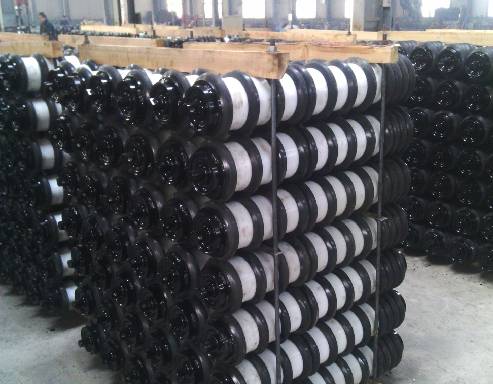 Afrikaans
Afrikaans  Albanian
Albanian  Amharic
Amharic  Arabic
Arabic  Armenian
Armenian  Azerbaijani
Azerbaijani  Basque
Basque  Belarusian
Belarusian  Bengali
Bengali  Bosnian
Bosnian  Bulgarian
Bulgarian  Catalan
Catalan  Cebuano
Cebuano  Corsican
Corsican  Croatian
Croatian  Czech
Czech  Danish
Danish  Dutch
Dutch  English
English  Esperanto
Esperanto  Estonian
Estonian  Finnish
Finnish  French
French  Frisian
Frisian  Galician
Galician  Georgian
Georgian  German
German  Greek
Greek  Gujarati
Gujarati  Haitian Creole
Haitian Creole  hausa
hausa  hawaiian
hawaiian  Hebrew
Hebrew  Hindi
Hindi  Miao
Miao  Hungarian
Hungarian  Icelandic
Icelandic  igbo
igbo  Indonesian
Indonesian  irish
irish  Italian
Italian  Japanese
Japanese  Javanese
Javanese  Kannada
Kannada  kazakh
kazakh  Khmer
Khmer  Rwandese
Rwandese  Korean
Korean  Kurdish
Kurdish  Kyrgyz
Kyrgyz  Lao
Lao  Latin
Latin  Latvian
Latvian  Lithuanian
Lithuanian  Luxembourgish
Luxembourgish  Macedonian
Macedonian  Malgashi
Malgashi  Malay
Malay  Malayalam
Malayalam  Maltese
Maltese  Maori
Maori  Marathi
Marathi  Mongolian
Mongolian  Myanmar
Myanmar  Nepali
Nepali  Norwegian
Norwegian  Norwegian
Norwegian  Occitan
Occitan  Pashto
Pashto  Persian
Persian  Polish
Polish  Portuguese
Portuguese  Punjabi
Punjabi  Romanian
Romanian  Russian
Russian  Samoan
Samoan  Scottish Gaelic
Scottish Gaelic  Serbian
Serbian  Sesotho
Sesotho  Shona
Shona  Sindhi
Sindhi  Sinhala
Sinhala  Slovak
Slovak  Slovenian
Slovenian  Somali
Somali  Spanish
Spanish  Sundanese
Sundanese  Swahili
Swahili  Swedish
Swedish  Tagalog
Tagalog  Tajik
Tajik  Tamil
Tamil  Tatar
Tatar  Telugu
Telugu  Thai
Thai  Turkish
Turkish  Turkmen
Turkmen  Ukrainian
Ukrainian  Urdu
Urdu  Uighur
Uighur  Uzbek
Uzbek  Vietnamese
Vietnamese  Welsh
Welsh  Bantu
Bantu  Yiddish
Yiddish  Yoruba
Yoruba  Zulu
Zulu Understanding the Functionality of Conveyor Take-Up Pulleys in Material Handling Systems
Understanding Conveyor Take-Up Pulleys Importance and Functionality
In the realm of material handling systems, conveyor belts play a vital role in the efficient transportation of goods across various industries. Among the numerous components that contribute to the seamless operation of a conveyor system, the take-up pulley is crucial. This article delves into the significance, functionality, and maintenance of conveyor take-up pulleys, shedding light on their essential roles in ensuring the longevity and efficiency of conveyor systems.
What is a Conveyor Take-Up Pulley?
A conveyor take-up pulley is a component located at the end of a conveyor system. Its primary purpose is to provide tension to the conveyor belt, ensuring it remains taut and properly aligned during operation. The take-up pulley comes equipped with adjustable mechanisms that allow operators to increase or decrease the tension as needed, accommodating for belt stretch due to wear, thermal expansion, or changes in load.
The Importance of Tension Control
Maintaining the correct tension in a conveyor belt is not just a matter of operational efficiency; it is essential for the longevity of the entire system. A belt that is too loose can slip or misalign, leading to material spillage, increased wear, and potential damage to both the belt and other components such as rollers and motors. Conversely, a belt that is too tight can place undue stress on the drive system and reduce the lifespan of the conveyor. Therefore, the take-up pulley plays a pivotal role in balancing these forces, ensuring optimal performance and longevity.
Types of Take-Up Systems
There are generally two types of take-up systems employed in conveyor designs mechanical and automatic
.1. Mechanical Take-Up Systems These systems rely on physical adjustments to maintain tension. Typically, they consist of adjustable winches or jackscrews that allow operators to change the position of the take-up pulley manually. While this method provides straightforward functionality, it requires regular monitoring and maintenance to ensure optimal belt tension.
conveyor take up pulley

2. Automatic Take-Up Systems These systems employ sophisticated technology to automatically adjust the tension in real-time. Utilizing pneumatic or hydraulic mechanisms, automatic take-up systems can respond to changes in load or belt conditions without the need for manual adjustments. This mode of operation significantly reduces manpower requirements and increases the reliability of the conveyor system.
Maintenance and Best Practices
To ensure the effective operation of take-up pulleys, regular maintenance is essential. Here are several best practices
- Regular Inspection Operators should routinely inspect the take-up pulley for wear and alignment issues. A misaligned pulley can lead to uneven belt tension and contribute to premature wear.
- Lubrication Ensure that all moving parts, including bearings associated with the take-up pulley, are regularly lubricated to minimize friction and wear.
- Belt Alignment Regularly check the belt alignment and adjust the take-up pulley as necessary to prevent any undue lateral forces that can cause damage.
- Monitor Tension Utilize tension measuring devices to monitor the belt tension consistently. This proactive approach can help identify problems before they escalate into major issues.
Conclusion
In conclusion, the conveyor take-up pulley is a small yet indispensable component of a conveyor system. Understanding its functions, types, and maintenance requirements can significantly enhance the efficiency and longevity of material handling operations. As industries continue to evolve, the role of take-up pulleys may also adapt, leveraging new technologies to ensure that conveyor systems operate at peak performance. Maintaining the balance of tension within conveyor belts will remain a fundamental aspect of effective material handling, and the take-up pulley will always be at the forefront of this endeavor.
-
Revolutionizing Conveyor Reliability with Advanced Rubber Lagging PulleysNewsJul.22,2025
-
Powering Precision and Durability with Expert Manufacturers of Conveyor ComponentsNewsJul.22,2025
-
Optimizing Conveyor Systems with Advanced Conveyor AccessoriesNewsJul.22,2025
-
Maximize Conveyor Efficiency with Quality Conveyor Idler PulleysNewsJul.22,2025
-
Future-Proof Your Conveyor System with High-Performance Polyurethane RollerNewsJul.22,2025
-
Driving Efficiency Forward with Quality Idlers and RollersNewsJul.22,2025





























